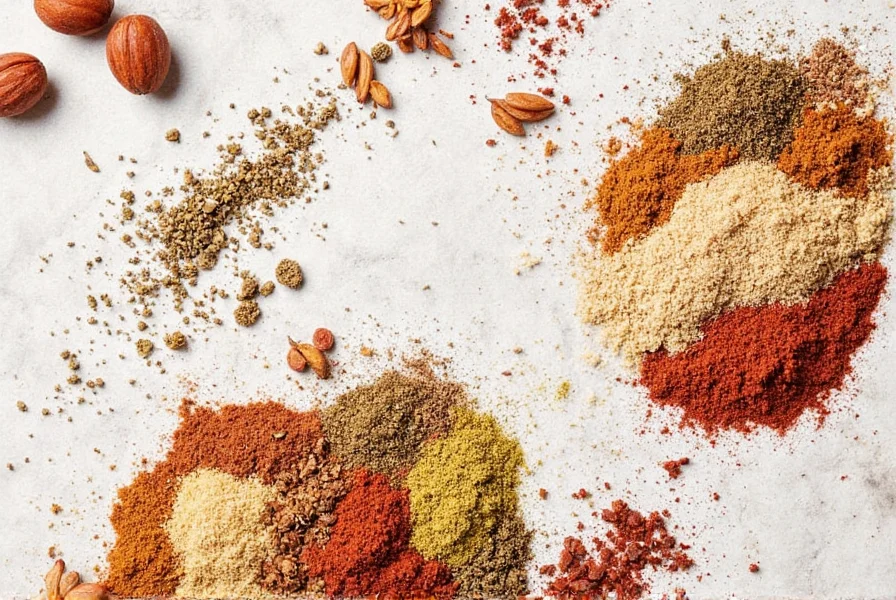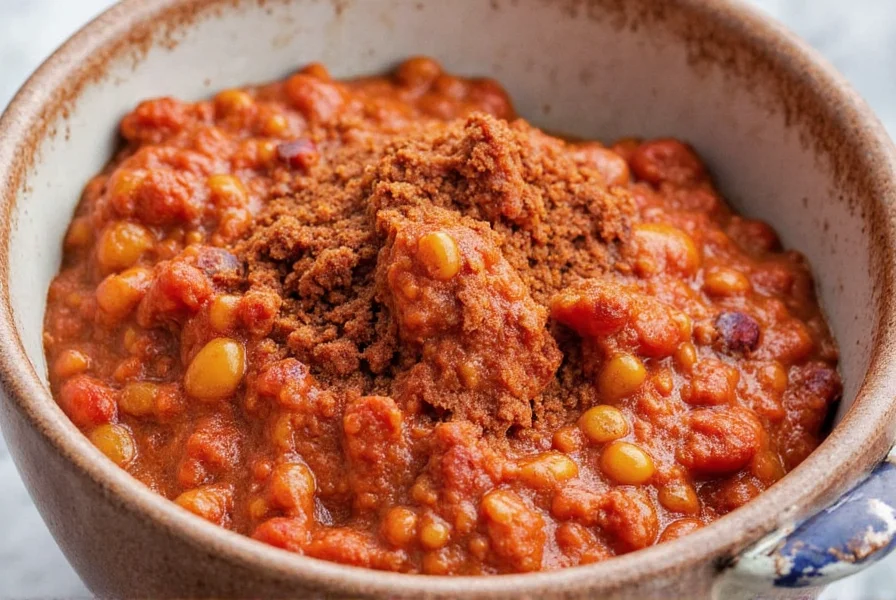Transform your pot roast from bland to amazing with these 7 proven spice hacks that chefs use. In this guide, you'll learn exactly how to layer flavors, toast spices for maximum aroma, store spices properly, and more to create restaurant-quality pot roast every time. Plus, we've included storage secrets to keep your spices fresh for months. Let's get cooking!
Table of Contents
- Spice Hack #1: Layer Your Flavors Like a Pro
- Spice Hack #2: Freshness Matters — How to Store Spices
- Spice Hack #3: The Magic of Toasting
- Spice Hack #4: Use Salt Strategically
- Spice Hack #5: Don't Skip the Acid
- Spice Hack #6: Build a Custom Spice Blend
- Spice Hack #7: Know When to Add Herbs
- Buying Guide: Top Spice Storage Solutions & Must-Have Tools
- Frequently Asked Questions
- Final Thoughts
Spice Hack #1: Layer Your Flavors Like a Pro
If you want your pot roast to taste like it came straight from a five-star kitchen, you need to layer your flavors — starting from searing to simmering.
TIP: Start by seasoning your meat generously before searing. A classic base includes salt, pepper, garlic powder, onion powder, and smoked paprika. This forms the backbone of your flavor profile.
| Spice/Ingredient | Purpose |
|---|---|
| Salt | Enhances natural meat flavors |
| Black Pepper | Adds warmth and depth |
| Garlic Powder | Provides savory umami |
| Onion Powder | Boosts sweetness and aroma |
| Smoked Paprika | Imparts smoky richness |
Spice Hack #2: Freshness Matters — How to Store Spices
Did you know spices can go stale? Whole spices last longer than ground ones — but if you don't store them right, even fresh ones lose their punch in no time.
Here's how to keep your spice rack at peak performance:
- Store in airtight containers away from light, heat, and moisture.
- Label everything clearly — especially if you make custom blends.
- Avoid storing near the stove, where heat accelerates degradation.
- Replace ground spices every 6–12 months; whole spices every 1–2 years.
Spice Hack #3: The Magic of Toasting
Want to unlock the full potential of your spices? Try toasting them first. This works especially well with whole spices like cumin seeds, coriander seeds, or peppercorns.
To toast spices:
- Dry roast in a pan over medium heat for 1–2 minutes until fragrant.
- Grind immediately using a spice grinder or mortar and pestle.
- Incorporate into your pot roast rub or sauce base.

Spice Hack #4: Use Salt Strategically
Salt isn't just for seasoning — it plays a key role in drawing out moisture and enhancing tenderness when used correctly.
Salt Application Methods
| Method | Best For | When to Apply |
|---|---|---|
| Dry Brining | Tenderizing meats | At least 1 hour before cooking |
| Surface Seasoning | Crispy crust formation | Just before searing |
| Brine Soak | Whole roasts or large cuts | 6–12 hours ahead |
Spice Hack #5: Don't Skip the Acid
Acid is your best friend when balancing rich flavors. In pot roast recipes, acid helps cut through fat and brighten the overall flavor.
Common Acids:
- Vinegar (apple cider, red wine)
- Lemon juice
- Tomato paste or crushed tomatoes
- Worcestershire sauce

Spice Hack #6: Build a Custom Spice Blend
Want to create a signature pot roast flavor? Mix your own blend. Here's a simple one to try:
The Ultimate Pot Roast Rub
- 2 tbsp smoked paprika
- 1 tbsp garlic powder
- 1 tbsp dried thyme
- 1 tsp ground black pepper
- 1 tsp ground mustard seed
- ½ tsp cayenne (optional for kick)
Mix well and store in an airtight jar. Shake before each use.
Spice Hack #7: Know When to Add Herbs
Herbs are powerful, but timing matters. Fresh herbs should be added toward the end to preserve brightness. Dried herbs work best when added early for deeper flavor infusion.
Herb Timing Guide
| Herb Type | When to Add |
|---|---|
| Fresh Rosemary | Last 10 minutes of cooking |
| Dried Thyme | Start of braising/simmering |
| Fresh Parsley | After serving as garnish |
| Dried Sage | Mixed with oil for searing |
Buying Guide: Top Spice Storage Solutions & Must-Have Tools
If you're serious about your spice game, investing in quality storage and tools is non-negotiable. Below are our top picks for spice organization, longevity, and ease of use.
1. Magnetic Spice Jars — The Modern Pantry Staple

- Features: Stackable, magnetic back, clear labels, air-tight seals
- Advantages: Saves cabinet space, easy access, modern look
- Use Cases: Small kitchens, wall-mounted setups, frequent cooks
- Target Audience: Home cooks who love style and function
- Best Occasions: Kitchen upgrades, wedding registries, holiday gifts
2. Manual Spice Grinder — For Freshness Lovers

- Features: Ceramic burr, wooden handle, adjustable settings
- Advantages: No electricity needed, retains essential oils better than electric grinders
- Use Cases: Grinding whole peppercorns, cumin seeds, or fennel
- Target Audience: Culinary purists, spice connoisseurs
- Best Occasions: Cooking sessions, dinner parties, weekend meal prep
3. Spice Drawer Organizer — Classic but Effective

- Features: Adjustable dividers, stackable trays, labeled compartments
- Advantages: Keeps spices visible and organized, prevents clutter
- Use Cases: Deep drawers under stoves or islands
- Target Audience: Busy families, multi-cook households
- Best Occasions: Everyday use, quick meal prep nights
4. Silicone Spice Mats — Mess-Free Measuring

- Features: Non-stick surface, measurement markings, easy to clean
- Advantages: Prevents countertop mess, doubles as prep station
- Use Cases: Mixing spice rubs, prepping sauces, blending seasonings
- Target Audience: Casual bakers and advanced home chefs alike
- Best Occasions: Weekend baking, spice experimenting, batch cooking
5. Vacuum-Sealed Spice Bags — Long-Term Storage Powerhouse

- Features: Mylar-lined vacuum bags, oxygen absorbers included
- Advantages: Prolongs shelf life up to 2–3 years, protects against humidity
- Use Cases: Bulk buying, long-term storage, camping or emergency kits
- Target Audience: Bulk shoppers, survivalists, budget-conscious buyers
- Best Occasions: Seasonal prep, pantry refreshes, outdoor adventures
Frequently Asked Questions
How long should I cook my pot roast for tender results?
For a traditional pot roast, cook at 325°F (165°C) for about 3-4 hours, or until the meat is fork-tender. The exact time depends on the size of your roast - a good rule of thumb is 45-60 minutes per pound. Remember to use our spice hacks throughout the cooking process: apply the dry rub before searing, add dried herbs at the beginning of braising, and finish with fresh herbs and a splash of acid at the end for maximum flavor impact.
What's the best cut of meat for pot roast?
Chuck roast is generally considered the best cut for pot roast because it has the perfect balance of meat and marbling that breaks down beautifully during slow cooking. Brisket and round roast also work well. For best results, use our Spice Hack #1 to layer flavors by seasoning generously before searing, and don't forget Spice Hack #4 about strategic salt application to enhance tenderness.
Why is my pot roast tough?
Pot roast becomes tough when it hasn't cooked long enough for the collagen to break down into gelatin. It needs low and slow cooking - don't rush it! Make sure you're cooking at the right temperature (around 325°F) for sufficient time. Also, check if you've properly seared the meat (Spice Hack #1) and used enough liquid for braising. Adding acid (Spice Hack #5) like tomato paste or vinegar can also help tenderize the meat while enhancing flavor.
Can I use this spice advice with a slow cooker pot roast?
Absolutely! All these spice hacks work beautifully with slow cooker pot roast. Apply the dry rub before searing (even if you're using a slow cooker, searing first makes a huge difference), add dried herbs at the beginning of cooking, and stir in fresh herbs and acid during the last hour. For best results with Spice Hack #3, toast your spices before adding them to the slow cooker to maximize their flavor potential.
How do I store leftover pot roast and keep it flavorful?
Store leftovers in an airtight container with some of the cooking liquid to keep the meat moist. Refrigerate for up to 4 days or freeze for up to 3 months. When reheating, do so gently on the stove with a bit of broth to restore moisture. Remember our Spice Hack #2 about spice freshness - if you're making extra for leftovers, consider holding back some fresh herbs and acid (Spice Hack #5) to add when reheating for maximum flavor, as these delicate components lose potency over time.
What vegetables work best with pot roast?
Classic pot roast vegetables include carrots, potatoes, onions, and celery. Add hearty root vegetables at the beginning of cooking, but wait to add more delicate vegetables like peas or fresh herbs until the last hour. For extra flavor, toss your vegetables with some of our custom spice blend (Spice Hack #6) before adding them to the pot. The vegetables will absorb all those wonderful flavors while cooking.
Final Thoughts
Your pot roast deserves more than just a pinch of salt. With these spice hacks and smart storage tips, you'll not only enhance your meals — you'll also extend the life of your spices and elevate your cooking confidence.
So go ahead — experiment with new blends, toast those spices like a pro, and never let a bland bite ruin your Sunday roast again.
Got a favorite pot roast secret? Share it in the comments — we're always hungry for more ideas!










 浙公网安备
33010002000092号
浙公网安备
33010002000092号 浙B2-20120091-4
浙B2-20120091-4